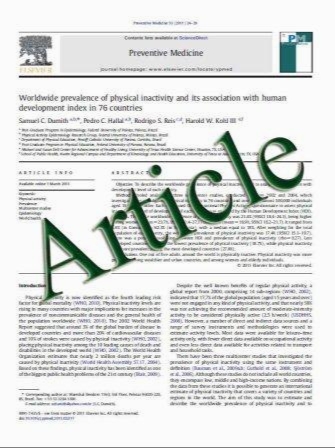The effect of caffeine on intraocular pressure: a systematic review and meta-analysis
- نوع فایل : کتاب
- زبان : انگلیسی
- مؤلف : Mao Li & Min Wang &Wenyi Guo & Jiajian Wang & Xinghuai Sun
- چاپ و سال / کشور: 2010
Description
Background Caffeine is widely consumed, and its effect on intraocular pressure (IOP) has been reported in conflicting data. The aim of this meta-analysis was to quantitatively summarize the effect of caffeine on IOP in normal individuals and in patients with glaucoma or ocular hypertension (OHT). Methods A comprehensive literature search was performed using the Cochrane Collaboration methodology to identify pertinent randomized controlled trials (RCTs) from the Cochrane Central Register of Controlled Trials (CENTRAL), PubMed and EMBASE. A systematic review and meta-analysis was performed. IOP at 0.5 hour (h), 1 h and 1.5 h after caffeine ingestion was the main outcome measurement. Results Six RCTs (two parallel-designed and four crossover-designed) evaluating 144 participants fulfilled inclusion criteria. The risk of bias for these studies was uncertain. Among the participants, 103 were normal individuals and 41 were patients with glaucoma or OHT. In normal individuals, the IOPs measured at 0.5 h, 1 h and 1.5 h post-intervention were not affected by ingestion of caffeine. The weighted mean difference (WMD) with 95% confidence intervals (95%CI) for each measurement point were -0.740 (–2.454, 0.974), 0.522 (–0.568, 1.613) and 0.580 (–1.524, 2.684). However, in patients with glaucoma or OHT, IOP increased at each measurement point, with the WMD and 95%CI being 0.347 (0.078, 0.616), 2.395 (1.741,3.049) and 1.998 (1.522,2.474) respectively. No publication bias was detected by either Begg’s or Egger’s test. Conclusion Available evidences showed that caffeine had different effects on IOP in different groups of individuals. For normal individuals, IOP was not changed by ingestion of caffeine, while for patients with glaucoma or OHT, IOP increased significantly. More high-quality RCTs are warranted to confirm this. The mechanisms underlying this phenomenon and the clinical significance are to be explored.
Graefes Arch Clin Exp Ophthalmol (2011) 249:435–442 DOI 10.1007/s00417-010-1455-1 Received: 26 January 2010 / Revised: 16 June 2010 / Accepted: 7 July 2010 / Published online: 13 August 2010


